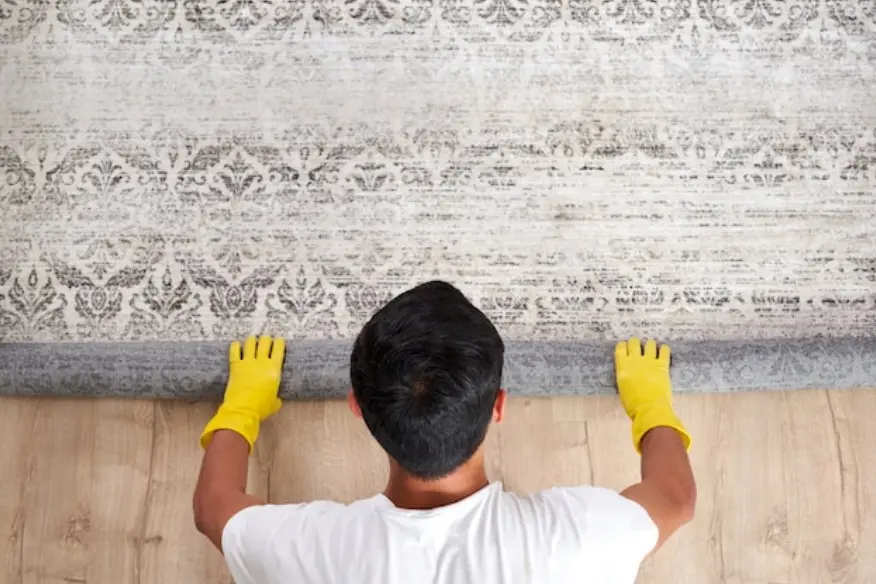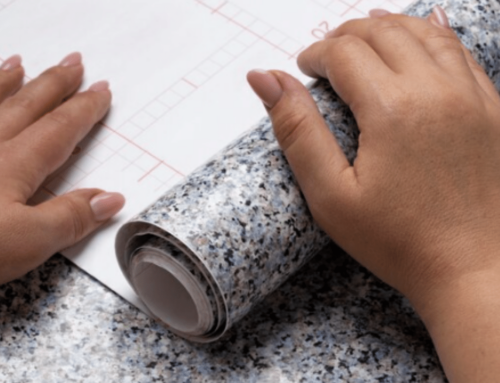When it comes to transforming the ambiance and comfort of your living space, few things have the power to make as big of an impact as a well-installed carpet. A carpet isn’t just a floor covering; it’s a statement of style, a provider of warmth, and a buffer against noise.
But installing a carpet isn’t just about rolling out a rug and smoothing it down; it’s an art and science that requires careful consideration and precise execution.
In this blog, we’ll explore the ins and outs of carpet installation, from selecting the right carpet to ensuring a flawless finish.
Why is Carpet Important in the Living Room?
The living room, often considered the heart of a home, serves as a focal point for relaxation, entertainment, and socializing. Choosing the right carpet for a living room can transform it from a mere space to a cozy, inviting haven. Carpeting is a popular choice for living room flooring for various reasons.
Here are some reasons why carpets are considered important or beneficial for living rooms:
- Comfort: Carpets provide a soft and warm surface underfoot, which is particularly welcoming in a space where people often relax. It’s comforting to walk, sit, or even lie down on a carpeted surface.
- Insulation: Carpets have insulating properties that help retain warmth, making the room feel warmer during colder months. This can also lead to some energy savings, as it can reduce the need for heating to some extent.
- Noise Reduction: Carpets absorb sound, which can minimize the echo in a room and reduce noise levels. This is beneficial in living rooms where you might have a TV, music system, or regular conversations, ensuring a quieter environment.
- Safety: Carpet provides a non-slip surface, which can prevent falls, particularly important in households with children or elderly members.
- Style and Aesthetics: Carpets come in various colors, patterns, and textures, offering a wide range of design possibilities. A carefully chosen carpet can greatly enhance the décor of a living room, making it look more inviting and cohesive.
- Air Quality: Some studies suggest that carpets can improve indoor air quality by trapping allergens and other particulates, preventing them from circulating in the air. Regular cleaning of the carpet is essential to reap this benefit and avoid accumulation.
- Versatility: With the availability of area rugs, one doesn’t need to carpet the entire floor. An area rug can define spaces in open-plan living areas or add a touch of luxury and style.
- Protection: Carpets can protect the underlying floor from spills, stains, and wear and tear, especially in high-traffic areas.
Benefits of Professional Carpet Installation
Carpeting can transform the look and feel of a space. While some may be tempted to attempt DIY installation, investing in professional carpet installation offers multiple advantages.
Here are the main reason why you need to hire the experts:

carpet installation indian trail
- Expertise and Experience: Professional carpet installers have extensive experience in their craft. They are trained to handle a variety of carpet types, subfloors, and challenging room layouts. Their expertise ensures the job is done correctly the first time, avoiding costly mistakes.
- Appropriate Tools: Professionals possess the necessary tools for the job—stretchers, knee kickers, seam rollers, and more. These tools are crucial for achieving a smooth and wrinkle-free installation, and acquiring them for a DIY job can be costly and impractical.
- Time-Saving: Carpet installation can be time-consuming, especially for those unfamiliar with the process. Professionals can expedite the process, allowing homeowners to enjoy their new carpet sooner.
- Optimal Results: A professionally installed carpet is likely to look better and last longer. Proper installation ensures no bulging, bunching, or visible seams, giving the room a polished and elegant appearance.
- Warranty Protection: Many carpet manufacturers require professional installation to keep their product warranty valid. A DIY job might void this warranty, leaving homeowners without protection against manufacturing defects.
- Problem Solving: Unexpected issues, such as uneven subfloors, moisture problems, or damaged underpadding, can arise during installation. Professionals are adept at diagnosing and addressing these challenges promptly.
- Material Efficiency: Professionals can efficiently measure and cut carpet, reducing waste. This material efficiency can save money in the long run, especially with more expensive carpeting.
- Seam Placement and Matching: Carpets often come in rolls of a specific width, which means larger rooms will have seams. A professional installer can strategically place seams where they’re least noticeable and ensure that patterns match seamlessly.
- Safety: Incorrectly installed carpets can pose tripping hazards. Professional installation guarantees the carpet is firmly secured, eliminating potential dangers.
- Post-Installation Cleanup: After installation, there’s often leftover material, debris, and old flooring to dispose of. Professional installers typically handle this cleanup, leaving the homeowner with nothing but a beautiful new floor.
While DIY projects can be rewarding in their own right, carpet installation is one area where the expertise of professionals can make a significant difference. By relying on their skills, homeowners can ensure a smooth, safe, and aesthetically pleasing outcome that stands the test of time.
What is the Useful Life of A Carpet?
The useful life of a carpet varies based on several factors, including the type of carpet, its quality, how it’s maintained, and the amount and type of traffic it endures. Generally, the lifespan of a carpet can be categorized by its type and typical use:
- Low-End Carpets: Typically found in rental properties or budget installations, these can last anywhere from 1 to 5 years. They might show signs of wear and tear relatively quickly, especially in high-traffic areas.
- Medium-Grade Residential Carpets: These are usually designed for homeowners and can last between 5 to 15 years, depending on maintenance and usage.
- High-End Carpets: Made of higher quality materials and denser piles, these can last between 15 to 25 years, sometimes even longer with proper care.
- Commercial Carpets: These carpets are designed to handle higher foot traffic and can vary widely in their lifespan. A commercial carpet in a busy office or retail space might last 5-10 years, while one in a lesser-trafficked area could last 10-15 years or more.
Factors Affecting the Lifespan of a Carpet Include:
- Material: Wool carpets, for instance, are robust and can last for decades, while certain synthetic fibers might show wear sooner. Nylon is considered the most durable synthetic carpet fiber.
- Density and Pile: Denser carpets with tighter woven fibers tend to last longer. Similarly, shorter pile heights (like berber) tend to wear slower than taller, softer piles.
- Padding: Good quality padding not only provides comfort but also protects the carpet from wear and tear, extending its lifespan.
- Maintenance: Regular vacuuming, prompt stain removal, and professional cleanings every 12-18 months can greatly extend the life of a carpet.
- Foot Traffic: Carpets in high-traffic areas, like hallways and living rooms, tend to wear out faster than those in bedrooms or formal dining rooms.
- UV Exposure: Carpets exposed to significant amounts of sunlight can fade and deteriorate faster.
- Quality of Installation: Proper installation can prevent issues like buckling, which can affect a carpet’s lifespan.
It’s essential to choose the right carpet for the intended use and to maintain it properly to get the most extended possible lifespan out of it.
Is Carpet An Art?
Carpet, particularly in the form of rugs and tapestries, has long been considered an art form, especially when we explore its historical and cultural contexts. Here’s why carpet can be seen as art:
- Historical Significance: Traditional carpets, especially those from regions like Persia (modern-day Iran), Anatolia (Turkey), and the Caucasus, have been created for centuries. Their intricate designs, motifs, and craftsmanship are deeply rooted in the histories and stories of these regions.
- Symbolism and Meaning: Many traditional carpets contain symbols, motifs, and patterns that have specific meanings. For example, certain symbols might represent protection, fertility, or prosperity. These symbols and designs are not just aesthetic choices but convey deeper meanings and stories.
- Artisanal Craftsmanship: Creating a hand-knotted or hand-woven carpet requires an immense amount of skill, patience, and knowledge. The craftsmanship behind these pieces is comparable to that of a painter or sculptor.
- Aesthetic Beauty: The sheer variety of designs, from geometric to floral, from abstract to representational, showcases the aesthetic sensibilities of carpet makers. The color choices, design symmetry, and intricate detailing can rival any visual art form.
- Cultural Representation: Carpets often represent the cultures from which they originate. For instance, Tibetan rugs reflect the spiritual motifs of Tibetan culture, while Navajo rugs represent the indigenous traditions of the Navajo people in the US.
- Functional Art: While many art forms are created solely for visual or aesthetic appreciation, carpets combine functionality with artistry. They can be used as floor coverings, wall hangings, or even as prayer rugs, serving multiple purposes.
- Collectible Items: Many antique rugs are sought after by collectors, not just for their functional value, but for their artistic and historical significance. Auction houses sometimes feature rare carpets that fetch prices comparable to renowned paintings.
- Innovation in Design: Contemporary carpet designers and artists continue to push boundaries, experimenting with materials, designs, and techniques, bridging the gap between traditional craft and modern art.
In museums, galleries, and exhibitions around the world, carpets are often displayed as art pieces, attesting to their artistic value. Like any art form, appreciation for carpets is subjective, but their cultural, historical, and aesthetic significance is undeniable.
Carpet Installation Experts
Flooring is more than just a functional element of your home; it’s a defining aspect of your living space’s aesthetic and comfort. While vinyl flooring offers its own set of advantages, the timeless charm and coziness of a well-installed carpet remain unparalleled. Trusting experts like Vinyl Flooring & Beyond ensures that every weave and pattern comes together seamlessly, adding that touch of warmth and luxury to your interiors.
Ready to elevate your living space with impeccable carpet installation? Dive into Vinyl Flooring & Beyond’s collection and let us redefine comfort for you. Call us today to schedule your consultation and take the first step towards a more sophisticated home.




